Doug and I were visiting the Elk River in British Columbia last weekend when a fellow in a drift boat opted to ignore the open channel on river right and float down the small side channel I was fishing. I was a little bummed — the oarsman could see me standing mid-channel from quite a ways away — but I assumed that he’d have the angler in the bow stop casting when they got close, and that they would slip behind me and scoot downstream a fair distance before they started up again.
Nope.
The fellow on the oars rowed right in front of me — almost close enough for me to reach out and poke him with my rod — while the angler in the bow kept casting. They pounded the bank I was fishing, and they kept doing so as they headed downstream. As you might imagine, I was less than pleased. After pondering their utter cluelessness for just a second, I reeled in and called it quits for the day.
There are a few things that you never want to do as a fly fisher. For example, if you’re rowing a boat and you have to pass a wade angler in tight quarters, you don’t just float through. Instead, there’s a basic protocol to follow:
- The downstream angler has the right of way.
- The wade angler has the right of way over the drift boat.
- Tell everyone in your boat to stop fishing while you’re still well upstream.
- Slow down above the angler. Drop anchor if you can’t hold the boat in place with the oars.
- Ask the angler if you should go behind — which is usually the best bet — or in front to minimize your impact on his or her fishing.
- Follow the angler’s directions.
- If it’s too tight to float by safely, get out and walk the boat quietly past the angler.
- Be sure to ask the angler if they’re working upstream or downstream. If they are fishing downstream, give them a couple of hundred yards before anyone in your boat starts casting again.
The idea is to treat other folks with the same respect you’d hope for. It’s the Golden Rule, and it’s just as applicable in fly fishing as it is in the rest of our lives.
Editor's note: Read more about drift boat etiquette.
There are several other common mistakes you’ll want to avoid when you’re on the water. They fall under the following categories:
Personal Space
The vast majority of us prefer to have the water in our immediate vicinity to ourselves. To be frank, it’s rude as hell to encroach on someone else’s spot while they’re fishing. So how close is too close? That depends on any number of things, including the size of the stream or river, its popularity, the type of water, the time of day, the time of year, the proximity to large population centers, etc. Still, there are some general guidelines to keep in mind.
If you’re wading a large river and there are very few people around, try to give everyone you come across a ton of space. You don’t need to intrude on their angling.
If the quarters are tight, or if there are a bunch of folks in the immediate vicinity, you can get a little closer … but not much. My personal rule of thumb is that two anglers who don’t know each other should never be able to cast to the same location at the same time. If we assume that good casters can cast 100’ with a fly rod — which many can — we should aim to be at least 200’ away from the nearest fly fisher.
If we’re floating, it’s typically a good idea to stay at least a hundred yards away from other boats. You may find yourself in certain situations where you’ll have to be closer than that, but in general you want to give everyone on the river plenty of space.
Tunes
I love music. I just love it. But it’s important to realize that only total dicks blast their favorite tunes on the water. Here’s the thing. Technology allows us to listen to music at any volume we choose without imposing our musical tastes on everyone around us. While I prefer to fish without music — as do most of the folks I know — some anglers want music to enhance their experience. Fair enough. But it’s incumbent upon them to listen with earbuds or AirPods. As long as they avoid sharing their favorite songs with everyone else, they can crank AC/DC or enjoy Miley Cyrus to their heart’s content. Just don’t make the rest of us listen to it.
Cutting In Line
If you’ve been fly fishing for a while, you’ve probably heard the term “low holing.” It means that someone cut in front of someone else on the river in order to improve their odds of success. It also means that the angler who was just “low holed” will be understandably pissed at the individual or individuals who ignored fly fishing etiquette and chose greed over the Golden Rule.
How do we avoid this issue? It’s simple. If we’re floating, we give wade anglers and other boats a ton of room, and we avoid floating around someone and then pulling in to fish the water directly below them.
If we’re wading, we take a second to observe the other angler. If they’re working downstream, we either stay above them or we walk way, way, way downstream past them before starting to fish. And if they’re working upstream, we follow the same basic principle in the other direction.
Oh, and if you can’t tell which way a person is moving — if, for example, they’re stationary — all you have to do is ask. The vast majority of fly fishers will appreciate your good manners and tell you exactly what they’re planning.
Drones
If you’re someone who feels the need to film yourself or others with a drone, or if you purchased a drone to scout for rising fish or good river conditions from a distance, please keep in mind that a lot of folks have pretty serious issues with drones intruding on their personal space. With that in mind, don’t fly your drone around other anglers without their prior permission and be mindful that some people find the whine of a drone to be incredibly annoying. A little common sense can go a long, long way to avoid issues on the water.
Dogs
It’s really pretty simple. Don’t bring your dog fishing with you unless he or she is exceptionally well-behaved. At a minimum, your dog should always be under your control. Which means it should sit, stay and heel on command. And if you decide to take your dog to the river to swim, or for exercise, please keep it away from folks who are trying to fish. Even dog lovers like yours truly can get a little peeved when Bob the WonderDog charges over and puts down all the rising trout in the immediate vicinity.
In conclusion
I just want to point out that we are all personally responsible for everything we do on the water. If we act consciously and treat other folks with respect, we set a positive example and make the world a slightly better place for everyone around us. Conversely, if we’re loud and obnoxious, or clueless, or if we fail to embrace basic fly fishing etiquette, then we make things worse for ourselves as well as other anglers. From where I sit, that should be an easy choice for everyone who loves to fish.




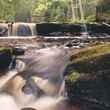
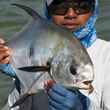




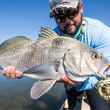




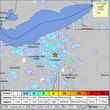




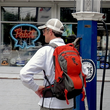
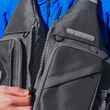



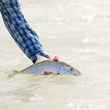



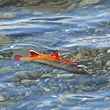
Comments
Shaun Reid replied on Permalink
There’s one to add and I don’t know what to call it. But, if you arrive at a spot while another angler or anglers are gearing up, it’s proper etiquette to ask those anglers what they are planning. At least on a stretch with limited access. I was rigging rods for my wife and one day when a guy pulled in behind us with his family. We were very close to ready. They all got out of their car and ambled down to the river. Well, this guy must have run after he got out of sight and did the F1 pit stop equivalent of a rod setup because he was well into a sketchy wade when we got to the water. In my mind, that guy was not there, first. Call it low holing if you want, but I fished right upstream. He didn’t say a word.
Jarrod replied on Permalink
I disagree with boat aspect of this article. Wade fishermen do not understand channels and boat navigation. Half of the time they are standing in the only path down or up. Boats have the right to pass and continue fishing, the fish will come back once the boat has passed. Anglers with boats are opting to drift fish. A wade fisherman shouldn’t encroach on their fishing anymore than they are encroaching on others simply by floating down a river. Of course when it’s possible we try to give them their space but 100yds is ridiculous. Not too many rivers are even 100yds wide. This is further confirming wade fishermen’s already entitled attitudes.
Chad Shmukler replied on Permalink
The author is not alone in his remarks regarding drift boat etiquette. The concept that wading anglers always have the right of way has been a standard in the fishing world for as long as most of us can remember.
Here's long-tenured and highly respected Delaware River guide Joe Demalderis echoing similar sentiments:
https://www.hatchmag.com/articles/drift-boat-etiquette-rules-road/7711246
Matt replied on Permalink
Let me make sure I understand, you are saying that no matter where you float to that you have the right to fish no matter whether someone is standing there in the water or not? Perhaps you should take a watercraft course, humans in water and less powered boats ALWAYS have the right of way, you very much have the obligation to yield to a wading fisherman with your drift boat. If you bumped into me or came dangerously close with your boat while I wade fish you would not just get an earful, trust me. What you said is violating rules and regulations, above and beyond your blissful ignorance of etiquette and ethics.
Torin replied on Permalink
You're out of line Jarrod! If you can't adhere to these long established rules of etiquette, perhaps you should find another past time or expect to have a boat full of holes!
Terry Ferguson replied on Permalink
I float fish. I also wade fish. I've done this for many years.
I follow the etiquette. I can't believe how many people do not.
It's not too much to give a wading fisherman a hundred yards or more of river (we're not talking width). You (Jarrod) have miles and miles to fish while the wading guy is limited.
You might take into consideration the wading fisherman could be:
Poor - he can't afford a boat.
Handicapped.
Maybe he thinks there are too dam many boats on the water putting pressure on every fish in the river.
I tolerate ignorance but not selfishness. Do not float by me like this if you know what's good for you
Anonymous replied on Permalink
Proper response from a drift boat guide trying to make a living. I appreciate the fact you are trying to make a living, but there have been quite a few times where the members of my group, as well as myself, have been knocked of of our feet by a drift boat, canoe, or kayak. I know the rivers are busy and crowded sometimes, but we have to have respect for the people in the river that can't get out of the way quickly.
Jerry Kustich replied on Permalink
Good words to contemplate
Matt replied on Permalink
You did the exactly wrong thing. You basically enabled rude folk to proceed with what they were doing. The right thing would be to politely educate/remind the other that they are misbehaving. Is there a risk of confrontation? Sure, but in my book only the one willing to take such risk has the right to speak up about it. It's unproductive to be quiet about it but then bitch later. My 2 cents. Otherwise I 100% agree with everything you said.
John Allan replied on Permalink
You should at least cast into their boat. Or into their fly line midcast
Richard Marnhout replied on Permalink
Exactly my thought too. Whip a tight looped cast right between the guide and his sport, and if they say anything, smile and say nothing.
Corbin Riemer replied on Permalink
We were on the Elk many days in August and September. The exact same thing happened. Side channel. River right available. Rafts and drift boats came through our small channel and bombed the bank. I said nothing at the time. Having read this article, which reinforces the right choices anglers should make … I am going to call out boats that do this in future. As in, loudly call out.
STEVE CHRISTOPHER replied on Permalink
What about "hole hogs?" I once read an article about fishing--I think on the Green River in Utah--which said that anglers were expected to work their way downstream, allowing others to follow them through the good spots. In 40+ years of fishing in the West I've never experienced that.
Bob Salerno replied on Permalink
Nice article, thanks for sharing your unfortunate experience. We all need to practice common sense, and good sportsmanship etiquette.
Joel Rosenberg replied on Permalink
I know this is completely off topic, but, if only there were articles like this that spoke to automobile drivers about driving etiquette!
Rick B. replied on Permalink
One more common violation of drift boat etiquette: Anchoring in wade access areas for literally hours without moving. Apparently, we have a new generation of anglers that don't like to get wet. There are spots on the WB where drift boats enter the river, anchor for hours, and then row back to the exact same ramp when they're done.
The ultimate violation of river etiquette is treating a fragile and finite resource as if it's an infinite and eternal. Relentless pounding of the UD system by a daily, 6-month parade of drift boats has adversely affected trout feeding behaviors and are a perfect example of the Tragedy of the Commons. Ask yourselves how much longer your clients will want to pay $600 for a 10-mile boat ride?
Gary Hager replied on Permalink
I too was on the Elk River in B.C. recently and had a very similar experience. I was with a guide, and we were anchored in the left side of the river, fishing to risers near the bank when another guide boat floated right between us and the bank, right over top of where we were fishing. We had to stop casting to the fish while he passed to avoid casting right into them. I saw him coming from several hundred yards away and even called out to him (nicely, at first) when it became obvious he was "coming through". He did not reply but just floated right through with his clients fishing all the while. He finally said "the fish will be back up in a few minutes". Unbelievable.
At that point, the proper action, I believe, is to tell the guide that you have his guide number from his boat and will be reporting him to the proper authorities. I've only had to do that once. Unfortunately, this kind of guide behavior seems to be fairly common on the Elk River.
Pages